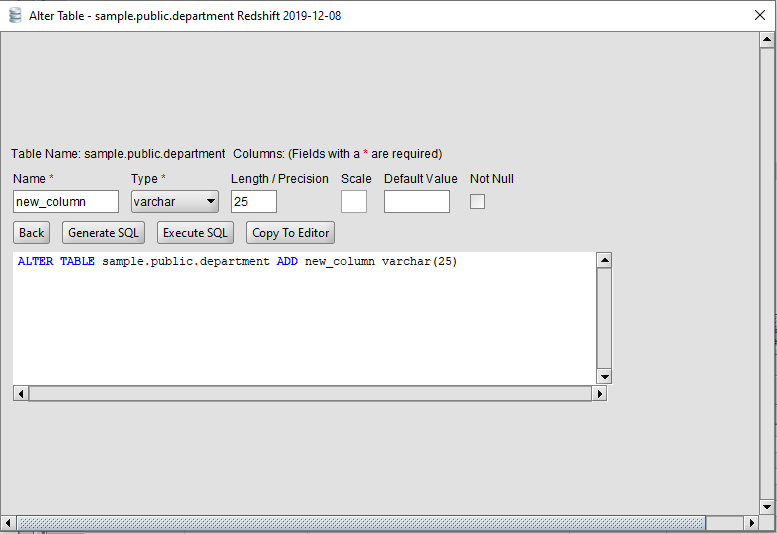

We use the preceding dimensional setup to create the tables using the defaults and illustrate how Automatic table optimization can automatically optimize it based on the query patterns. These recommendations are later applied using online ALTER statements into the respective Amazon Redshift tables automatically.įor this post, we consider a simplified version of the of the star schema benchmark (SSB), which consists of the lineitem fact table along with the part and orders dimensional tables. The following diagram is an architectural illustration of how Automatic table optimization works:Īs you can notice, as users query the data in Amazon Redshift, automatic table optimization collects the query statistics that are analyzed using a machine learning service to predict recommendations about the sort and distribution keys. In this post, we illustrate how you can take advantage of the Automatic table optimization feature for your workloads and easily manage several thousands of tables with zero administration. Optimizations made by the Automatic table optimization feature have been shown to increase cluster performance by 24% and 34% using the 3 TB and 30 TB TPC-DS benchmark, respectively, versus a cluster without Automatic table optimization. If Amazon Redshift determines that applying a key will improve cluster performance, tables are automatically altered within hours without requiring administrator intervention. Automatic table optimization continuously observes how queries interact with tables and uses ML to select the best sort and distribution keys to optimize performance for the cluster’s workload.
Create table redshift manual#
In Amazon Redshift, you can set the proper sort and distribution keys for tables and allow for significant performance improvements for the most demanding workloads.Īutomatic table optimization is a new self-tuning capability that helps you achieve the performance benefits of sort and distribution keys without manual effort. Spike Lee Discusses His Career and the Intersection of Art and Activism | The Atlantic Festival 2023Īlthough Amazon Redshift provides industry-leading performance out of the box for most workloads, some queries benefit even more by pre-sorting and rearranging how data is physically set up on disk. These capabilities use machine learning (ML) to adapt as your workloads shift, enabling you to get insights faster without spending valuable time managing your data warehouse. Amazon Redshift can even automatically refresh and rewrite materialized views, speeding up query performance by orders of magnitude with pre-computed results.

In addition, automatic workload management (WLM) makes sure that you use cluster resources efficiently, even with dynamic and unpredictable workloads.

Amazon Redshift automates common maintenance tasks and is self-learning, self-optimizing, and constantly adapting to your actual workload to deliver the best possible performance.Īmazon Redshift has several features that automate performance tuning: automatic vacuum delete, automatic table sort, automatic analyze, and Amazon Redshift Advisor for actionable insights into optimizing cost and performance. From airflow import DAG from .operators.Post Syndicated from Paul Lappas original Īmazon Redshift is the most popular and fastest cloud data warehouse that lets you easily gain insights from all your data using standard SQL and your existing business intelligence (BI) tools.


 0 kommentar(er)
0 kommentar(er)
